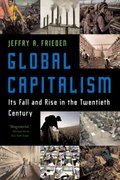Question
Practice Questions - Fiscal Policy and Automatic Stabilizers 1. All of the following, except one, would result from expansionary fiscal policy. Which is the exception?
Practice Questions - Fiscal Policy and Automatic Stabilizers
1.
All of the following, except one, would result from expansionary fiscal policy. Which is the exception?
A)
Increased GDP.
C)
Decreased unemployment.
B)
Increased price level.
D)
Decreased budget deficit.
Use the following to answer questions 2-4:
The economy is presently at real GDP level Y1.
2.
Refer to the graph above to answer this question. Which of the following does this graph illustrate?
A)
An economy experiencing full employment.
B)
An economy experiencing a recessionary gap.
C)
An economy experiencing an inflationary gap.
D)
An economy experiencing a budget deficit.
3.
Refer to the graph above to answer this question. If the government used counter-cyclical policy to address the situation illustrated by this graph, what should it do?
A)
Increase its own spending and tax rates.
B)
Decrease its own spending and tax rates.
C)
Increase its own spending and decrease tax rates.
D)
Decrease its own spending and increase tax rates.
E)
Decrease its own spending but leave tax rates unchanged.
4.
Refer to the graph above to answer this question. What would be appropriate government action in this situation?
A)
Use policy to decrease short-run aggregate supply.
B)
Use policy to decrease long-run aggregate supply.
C)
Use counter-cyclical fiscal policy to decrease aggregate demand.
D)
Use counter-cyclical fiscal policy to increase aggregate demand.
5.
Which of the following statements is true of counter-cyclical fiscal policy?
A)
It attempts to reinforce the business cycle.
B)
It attempts to smooth out the business cycle.
C)
It has been described as "enhancing the prevailing winds."
D)
It has no connection with the business cycle.
E)
It can eliminate the business cycle.
6.
Assume that the economy is in a recession and has a balanced budget. If the government increases its spending to reduce unemployment, what will happen to GDP and the government's budget?
A)
GDP will rise and the budget will be in a deficit.
B)
GDP will fall and the budget will be in a deficit.
C)
GDP will rise and the budget will be in a surplus.
D)
GDP will fall and the budget will be in a surplus.
7.
All of the following, except one, is a criticism of using counter-cyclical fiscal policy during a recession. Which is the exception?
A)
Its effectiveness is subject to serious time lags.
B)
It increases the price level and reduces exports.
C)
It increases interest rates which crowds out investment spending.
D)
It increases the exchange rate which crowds out exports.
E)
It reinforces the business cycle.
8.
All of the following, except one, are examples of automatic stabilizers. Which is the exception?
A)
Progressive income taxes.
B)
Expenditures on education which automatically rise when the number of school-aged children increases.
C)
Welfare payments which increase when the economy suffers a recession.
D)
Employment insurance which decreases when the economy is doing well.
Use the following to answer questions 9-11:
Below is some information about the state of the budget and the economy.
1. A budget deficit and a recessionary gap.
2. A budget deficit and an inflationary gap.
3. A budget surplus and a recessionary gap.
4. A budget surplus and an inflationary gap.
9.
Refer to the information above to answer this question. When would a balanced-budget fiscal policy be pro-cyclical?
A) 1 only. B) 1 and 4. C) 2 only. D) 2 and 3.
10.
Refer to the information above to answer this question. When would a counter-cyclical fiscal policy call for a decrease in government spending or a tax increase?
A) 1 only. B) 1 and 4. C) 2 only. D) 2 and 4.
11.
Refer to the information above to answer this question. When would a balanced-budget fiscal policy be counter-cyclical?
A) 2 and 3. B) 3 only. C) 4 only. D) 3 and 4.
12.
Which of the following is a potential problem with a cyclically balanced-budget fiscal policy?
A)
Governments can raise and lower spending levels at will.
B)
The life of the business cycle is often too short.
C)
Governments never cut taxes.
D)
Governments find it easier to cut spending in periods of an inflationary gap than raise spending in periods of a recessionary gap.
E)
Governments find it easier to raise spending in periods of an recessionary gap than cut spending in periods of an inflationary gap.
Step by Step Solution
There are 3 Steps involved in it
Step: 1

Get Instant Access to Expert-Tailored Solutions
See step-by-step solutions with expert insights and AI powered tools for academic success
Step: 2

Step: 3

Ace Your Homework with AI
Get the answers you need in no time with our AI-driven, step-by-step assistance
Get Started


